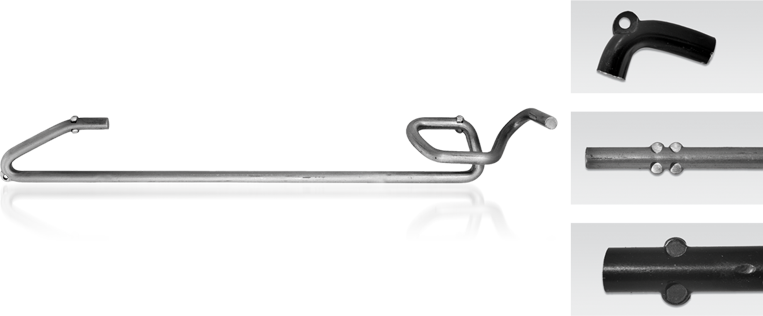| Stage I | Stage II | Stage III |


End stage
Wire diameter 5/16“, 2 sec. cycle time, series runs from 25,000 parts, finished part falling out, power requirement approx. 20 kW
Lug pressing and punching
Lug pressing and punching are two common processes in different metal manufacturing applications. As it is the case of other processes, lug pressing and punching require some metal deformation and removal to achieve the expected result.
What is lug pressing and punching?
First of all, a lug can be defined as a projection of an object by which it may be carried or attached to something. Therefore, lug pressing and punching is the manufacturing process where a press is used to flatten the projection of the metal wire and punching open the hole used by which it will be carried or attached.
A common application of lug pressing and punching is the creation of cable lugs, which are necessary to secure the cables to their corresponding connections by means of screws and nuts or any other type of fastener.
What is the difference between pressing and punching?
The difference between pressing and punching lies in the fact that pressing is the process used to generate the flat projecting area from the wire, and punching is the process used to create the hole on the projecting area by means of a punch and a die.
How are these processes performed?
Traditionally, each process is performed independently requiring specific tooling (presses and slides) and operators for each of them. Of course, these requirements result in higher costs and reduced efficiency, which in turn means less productivity, a longer time to market and lower profitability.
To avoid those negative aspects when needing both processes performed on the same piece, Schmale machines provide fully automated solutions that integrate more than one process as required, including bending, swaging, threading and flattening, allowing you to achieve a high level of efficiency and productivity.
The process begins where a wire with a diameter of up to 1″ is fed into the tool set by automatic servo-electric feeders. Then the wire goes through the processes mentioned before where an arrange of automated sliding benders and presses generate the expected results.
The entire cycle only takes a few seconds along the different stages to obtain the part ready for market, which clearly represents an enormous increase in efficiency and productivity and a significant reduction in the time to market, meaning that the profitability of your business will be higher.
If you are looking for an automated lug pressing and punching solution integrated with other processes required in your production cycle, or you have any further question, please do not hesitate to contact us and we will gladly help you.
